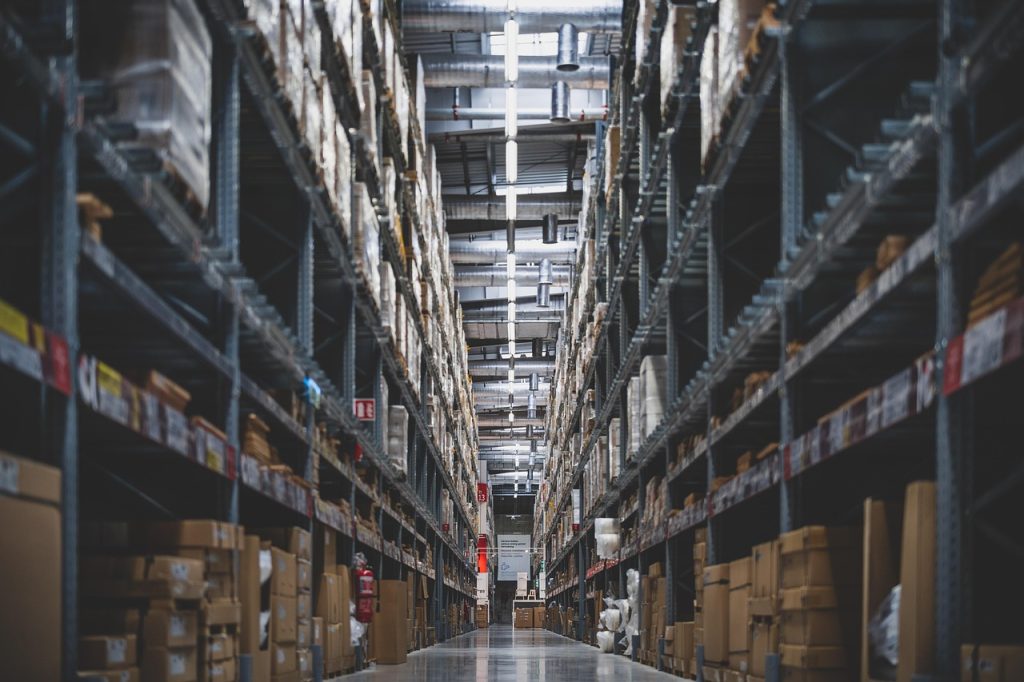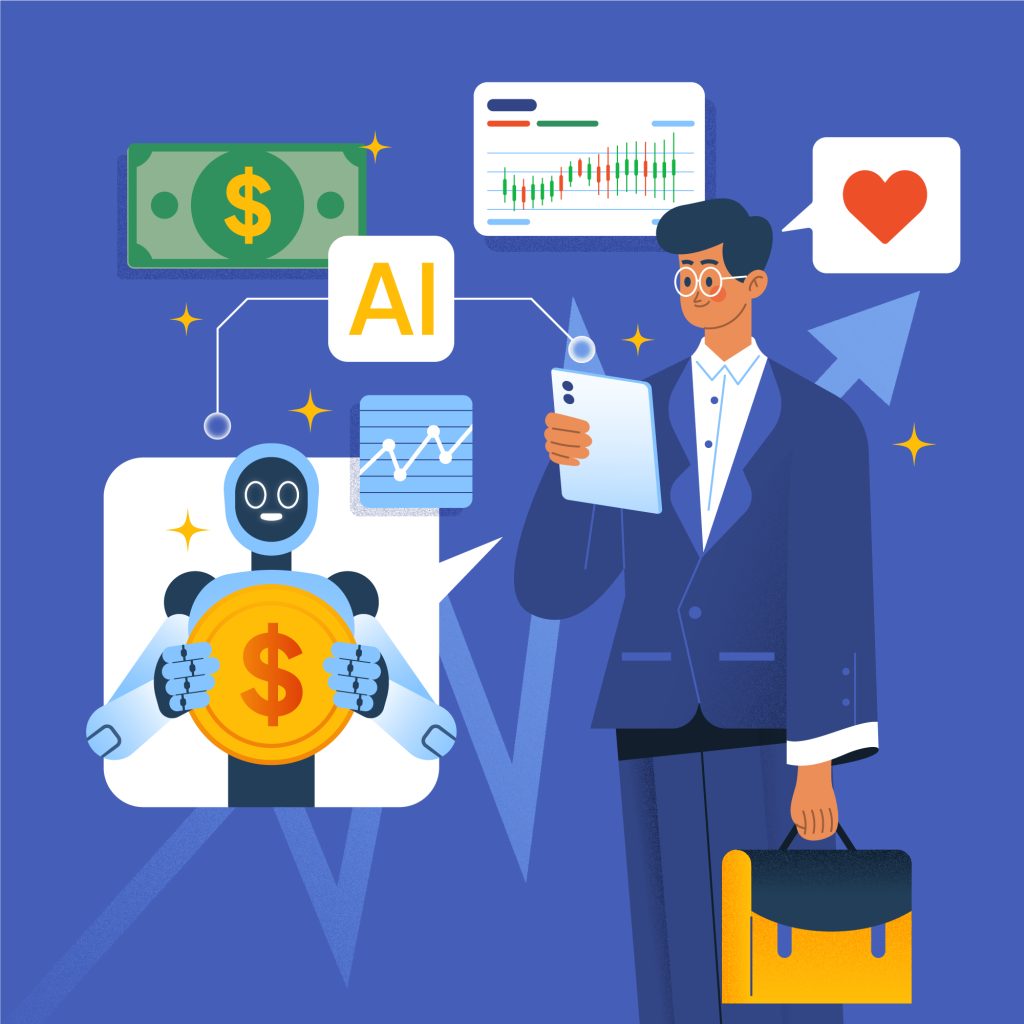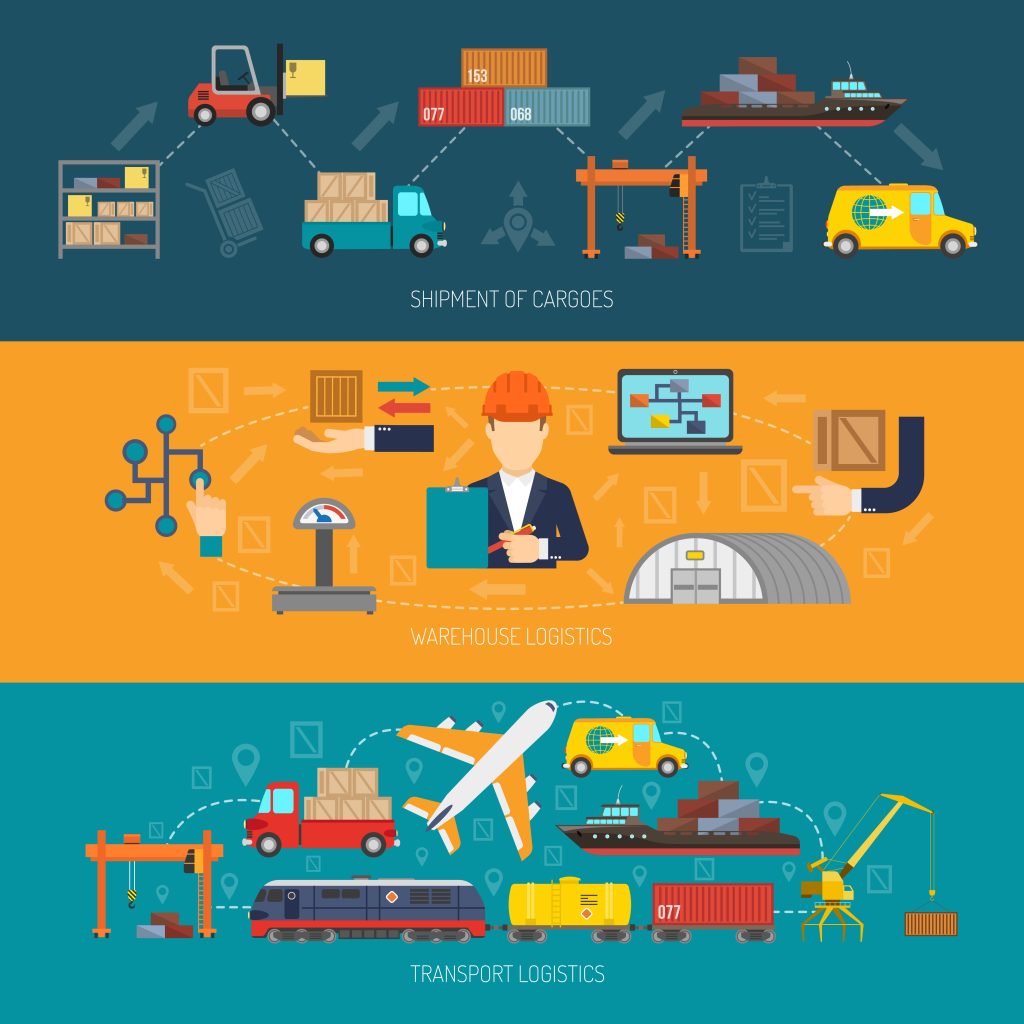Introduction
In today’s dynamic e-commerce environment, where customer expectations are high and market trends change in the blink of an eye, accurate demand forecasting and inventory optimization have become mission-critical for marketplace owners. Traditional forecasting methods often rely on static historical data and linear models that can’t keep up with the complexities of modern supply chains. Enter Artificial Intelligence (AI) — a transformative technology reshaping how marketplaces predict demand, manage inventory, and deliver seamless customer experiences.
AI analyzes historical sales data, real-time behavioral trends, and external factors to generate actionable insights that minimize stockouts and overstocking, helping businesses achieve operational efficiency, reduce costs, and stay ahead of competitors. By processing vast datasets and identifying patterns that humans often miss, AI enables marketplaces to make smarter, faster, and more precise decisions.
Challenges in Traditional Forecasting Methods
Before AI-driven systems became accessible, marketplaces primarily relied on traditional forecasting methods such as manual spreadsheets, basic statistical models, or simple historical trend analysis. While these approaches provided a starting point, they often fall short in today’s complex, fast-paced market environment.
One major challenge is their dependence on historical data alone. These models assume that past performance will predict future outcomes, which rarely accounts for sudden market shifts, emerging trends, or unprecedented global events such as pandemics or supply chain disruptions. This often results in inaccurate forecasts that can lead to overstocking or stock shortages.

Another limitation is the inability to process diverse data sources. Traditional systems lack the capability to analyze real-time factors such as social media sentiment, competitor activities, economic shifts, or localized buying patterns. This leads to delayed or reactive decision-making, preventing marketplaces from adapting quickly to changes in consumer behavior.
Moreover, these methods are time-consuming and prone to human error. Manual forecasting processes require significant labor, making them inefficient and difficult to scale as businesses grow.
Finally, traditional methods struggle with complexity and scalability. As Sharetribe marketplaces expand and customer bases diversify across geographies, managing multi-channel inventory and demand becomes exponentially more complicated — a challenge that legacy forecasting tools simply aren’t built to handle.
How AI Powers Demand Forecasting?
AI-driven forecasting combines advanced machine learning models with predictive analytics, creating a robust framework for anticipating customer needs. Here’s how it revolutionizes traditional forecasting approaches:
1. Data Analysis
At the heart of AI’s predictive power is its ability to process enormous volumes of both structured and unstructured data. Traditional systems rely on limited historical sales figures, but AI goes several steps further. It integrates:
Historical sales performance to understand baseline demand
Real-time browsing and purchase behavior to capture emerging trends
Competitor pricing and promotions for market context
Social media sentiment to gauge consumer interests and mood shifts
Economic and seasonal indicators such as inflation, holidays, or even cultural events
External disruptions, including weather conditions or supply chain delays
By aggregating and analyzing this multidimensional data, AI provides a 360-degree view of the market landscape, enabling highly accurate and timely predictions.
2. Pattern Identification
AI’s strength lies in identifying complex, hidden patterns that traditional forecasting tools simply cannot detect. For example, it can correlate subtle shifts in consumer sentiment with changes in buying behavior or recognize seasonal patterns that differ across regions and demographics.
For instance, a sudden spike in social media mentions of a trending product can signal increased demand well before it becomes evident in sales data. Similarly, AI can detect micro-trends, such as rising demand for eco-friendly packaging or locally sourced products, allowing marketplace operators to adjust inventory strategies before competitors catch on.

3. Real-Time Adaptation
Unlike static forecasting systems, AI models are adaptive and self-learning. As new data streams in — whether from recent sales, weather updates, or global events — AI recalibrates its predictions in real time.
Imagine a sudden influencer-driven trend causing a surge in demand for a particular product. AI-powered systems can instantly recognize this shift, trigger automatic reordering, and redistribute inventory across fulfillment centers to meet demand. This real-time responsiveness ensures marketplaces remain agile and competitive, even in unpredictable conditions.
Benefits for Marketplaces
The application of AI in demand forecasting and inventory optimization delivers tangible, measurable benefits that directly fuel growth, efficiency, and customer loyalty. By leveraging AI-driven insights, marketplaces can make smarter decisions, streamline operations, and position themselves for long-term success.
1. Optimized Inventory
AI ensures that inventory levels are balanced, efficient, and aligned with market demand at all times. By analyzing vast datasets — from historical purchase behavior to emerging trends — AI creates precise forecasts that help businesses stock exactly what customers want, in the right quantities, and at the right time.

This approach drastically reduces stockouts, which often frustrate customers and lead to lost sales opportunities. At the same time, it minimizes overstocking, which can tie up working capital, increase warehouse storage costs, and risk product obsolescence. Over time, this leads to leaner inventory systems that improve cash flow, lower waste, and free up resources for reinvestment in other areas like marketing or product development.
For example, seasonal marketplaces — A holiday marketplace selling Christmas lights predicts demand peaks in December and reduces January stock to avoid clearance sales.
2. Enhanced Customer Satisfaction
Customer satisfaction is often driven by availability, speed, and reliability. AI-powered demand forecasting ensures that high-demand products are consistently in stock, reducing the frustration of “out-of-stock” messages that can drive customers to competitors.
When customers know they can rely on your marketplace for accurate availability and timely delivery, it fosters trust and loyalty, encouraging repeat purchases and positive word-of-mouth referrals. In industries like groceries or fast-moving consumer goods (FMCG), where immediacy is key, maintaining consistent stock availability can be a game-changer.

Moreover, AI can integrate with customer personalization engines to recommend alternative products when certain items are unavailable, creating a frictionless shopping experience that keeps buyers engaged and satisfied.
For example, A grocery delivery app ensures bananas and milk are always in stock, while suggesting alternative brands when one runs out.
3. Cost Reduction
Inefficient inventory management often results in hidden costs — from overstocking and wasted storage to emergency procurement and markdowns on unsold products. AI eliminates much of this waste by generating data-driven forecasts that align procurement and storage with real demand.

By preventing over-purchasing and reducing emergency restocking orders, businesses experience significant savings in logistics, warehousing, and operational expenses. These savings can then be reinvested in areas that drive growth, such as expanding product catalogs, enhancing user experience, or scaling marketing campaigns.
Additionally, improved accuracy in forecasting reduces lost revenue opportunities, as products are stocked in sufficient quantities to meet demand without costly overcompensation. For example, A fashion marketplace avoids overstocking last season’s shoes by forecasting demand accurately, saving on storage and markdown costs.
4. Increased Agility
In today’s volatile markets, agility isn’t just an advantage — it’s a necessity. AI provides businesses with the flexibility and foresight to adapt quickly to shifts in demand, supply chain disruptions, or sudden global events.

For example, during unexpected surges — such as a viral product trend or sudden regional demand spike — AI systems can detect the shift in real time and recommend immediate actions, such as re-allocating stock to high-demand regions or adjusting supplier orders.
This agility enables marketplaces to proactively manage risks instead of reacting after problems occur, resulting in fewer missed sales opportunities and smoother operations even during high-demand periods.
5. Competitive Advantage
Incorporating AI into forecasting processes does more than improve operational efficiency — it provides a strategic edge that sets successful marketplaces apart from the competition.
By ensuring optimal product availability, faster order fulfillment, and seamless customer experiences, AI-powered platforms become more attractive to both buyers and sellers. This not only drives higher conversion rates but also strengthens marketplace reputation in the long term.
In highly competitive industries, even a small improvement in forecasting accuracy can translate into millions of dollars in additional revenue, faster delivery speeds, and increased market share. Competitors relying on outdated, manual systems simply can’t match the speed, accuracy, and scalability that AI brings to modern inventory management.
For example, An electronics marketplace delivers trending smartphones faster than competitors thanks to AI-driven forecasting, attracting more repeat buyers.
Real-World Examples
Amazon
Amazon is a pioneer in AI-driven demand forecasting, setting benchmarks for efficiency and precision. Its AI systems analyze vast datasets, including purchase histories, browsing behavior, regional buying trends, and even predictive search queries. This granular data allows Amazon to execute anticipatory shipping, where products are pre-positioned in nearby fulfillment centers before customers even place an order.

For example, during seasonal peaks such as Prime Day or the holiday season, Amazon’s AI systems dynamically adjust inventory distribution, ensuring that every warehouse is stocked according to regional demand patterns, minimizing delays and improving overall efficiency.
Walmart
Walmart leverages AI to perform hyper-local demand forecasting, a strategy that tailors inventory planning for individual stores. By analyzing local purchase patterns, weather conditions, regional holidays, and even local events, Walmart ensures shelves are stocked with the right products at the right time.
For instance, AI might detect an impending storm in a particular area and automatically increase inventory for essentials like water, flashlights, and batteries in stores within that region. Similarly, during cultural or sporting events, Walmart can anticipate demand spikes for related products, ensuring timely replenishment.

This localized approach not only reduces overstocking and understocking but also enables personalized customer experiences at scale, helping Walmart maintain its reputation for availability and reliability.
Zara
Fashion retailer Zara is another excellent example of AI-driven forecasting. Known for its fast-fashion model, Zara integrates AI to predict style trends, color preferences, and seasonal demands by analyzing social media mentions, online engagement, and sales velocity.

This allows Zara to shorten production cycles, ensuring popular designs hit stores quickly and in appropriate quantities. By aligning inventory levels closely with real-time consumer preferences, Zara minimizes excess stock, reduces markdowns, and maintains high profitability while keeping customers engaged with fresh and relevant collections.
The Future of AI in Marketplace Supply Chains
The role of AI in supply chain management is rapidly evolving, moving beyond simple prediction models into the realm of real-time, autonomous decision-making. As marketplaces become more complex and customer expectations rise, AI will be at the core of creating agile, intelligent, and highly efficient supply chains. Here’s what the future holds:
IoT-Integrated Inventory Management
The integration of AI with IoT (Internet of Things) sensors will revolutionize how inventory is tracked and managed. By providing real-time visibility into stock levels across warehouses, retail outlets, and even delivery vehicles, marketplaces will gain unmatched accuracy in monitoring stock flow. This connectivity will allow businesses to detect anomalies instantly, such as discrepancies in inventory counts or supply delays, and take immediate corrective action. Automated alerts and AI-driven insights will also support proactive restocking decisions, reducing the risk of shortages or overstock situations without the need for manual intervention.
Blockchain for Transparency and Security
AI paired with blockchain technology will build secure, transparent, and tamper-proof supply chains. Every step of a product’s journey — from manufacturing to last-mile delivery — can be tracked and recorded on an immutable ledger. This level of traceability not only reduces the risks of fraud, counterfeiting, and human errors but also builds customer trust by ensuring the authenticity of products and ethical sourcing. For marketplaces dealing in high-value goods or sensitive products, such as luxury items or pharmaceuticals, this integration will be a game-changer.
Automated Logistics and Smart Fulfillment
The future of fulfillment will be driven by automation and robotics powered by AI. In warehouses, robotic pickers and automated sorting systems will handle inventory with speed and precision, while AI-guided drones and self-driving trucks will transform delivery operations. These advancements will enable faster, more accurate, and cost-efficient fulfillment, reducing human error and labor costs. By streamlining logistics, marketplaces will be able to meet increasing consumer demands for same-day or next-day delivery, making speed and reliability a competitive advantage.

Hyper-Personalized Demand Forecasting
As AI and behavioral analytics evolve, marketplaces will gain the ability to predict demand at the individual customer level. By combining personal purchase histories with contextual data such as weather, local events, and even social media activity, AI systems will enable hyper-personalized recommendations and stocking strategies. This precision will not only boost conversion rates but also deepen customer loyalty, as shoppers will consistently find the products they want, exactly when they need them.
Predictive Disruption Management
AI’s predictive capabilities will become critical for risk assessment and disruption management. From natural disasters and economic crises to supply chain bottlenecks, AI will analyze massive datasets to anticipate disruptions before they occur. These early warnings will allow marketplaces to implement contingency plans, such as rerouting shipments, diversifying suppliers, or adjusting pricing strategies. By mitigating risks proactively, businesses can maintain operational continuity and safeguard customer satisfaction even during unpredictable events.
Sustainability and Green Logistics
As sustainability becomes a key priority, AI will help design eco-friendly and efficient supply chains. By optimizing delivery routes, consolidating shipments, and aligning production levels with real-time demand, AI can significantly reduce energy consumption and carbon emissions. This not only supports corporate social responsibility goals but also appeals to eco-conscious consumers who prefer marketplaces that prioritize sustainability. Over time, greener operations will also translate into cost savings, as optimized logistics naturally reduce waste and inefficiencies.
Conclusion
The predictive power of AI is transforming how marketplaces operate. By harnessing advanced machine learning models, businesses can forecast demand with unprecedented accuracy, optimize inventory in real time, and create agile supply chains that adapt to changing market conditions.
For marketplace owners, embracing AI is no longer optional — it’s a strategic necessity. Those who invest in AI-driven forecasting and inventory management today are setting themselves up for sustained growth, stronger customer relationships, and a commanding presence in an increasingly competitive market.
FAQ's
1. What makes AI forecasting better than traditional methods?
Traditional models rely only on past data, while AI adapts in real time using diverse inputs, making forecasts far more accurate and responsive to sudden market shifts.
2. How does AI prevent stockouts and overstocking?
AI predicts demand precisely, ensuring the right stock is available where it’s needed. This reduces lost sales from stockouts and prevents excess inventory that ties up capital.
3. Can small marketplaces benefit from AI?
Yes. With cloud-based and SaaS tools, even small and mid-sized marketplaces can use AI to optimize inventory, cut costs, and improve customer experience without huge investments.
4. What kind of data does AI use?
AI analyzes sales history, customer behavior, competitor pricing, social media trends, weather, seasonal events, and supply chain conditions to give a full market picture.
5. How does AI improve customer satisfaction?
By ensuring popular products are always in stock, reducing delays, and offering personalized alternatives, AI creates a seamless, reliable shopping experience.
6. What role will AI play in future supply chains?
AI will enable real-time inventory tracking with IoT, transparent supply chains via blockchain, and automated logistics through robotics and smart fulfillment systems.
7. Is AI expensive to implement?
Implementation costs vary, but affordable cloud and SaaS solutions make AI accessible. Long-term savings from efficiency, reduced waste, and higher sales outweigh initial costs.






